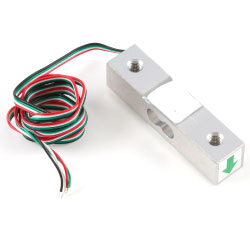All About Load Cells And How To Choose The Best For You
2023-01-23
As we are one of the best Load Cells Suppliers, we will discuss how to choose the appropriate load cell for you. The load cell is a transducer that converts compressive and tensile forces into an electrical output that can be quantified and interpreted. Most load cells are constructed of steel or aluminum, have a spring element connected to a pressure sensor, and are limited in flexibility.
Working:
The most common type of load cell used in the industry is the strain gauge, which is a type of load cell. Other kinds include hydraulic and pneumatic. In risky situations, pneumatic load cells are employed, whereas hydraulic versions are used in places with insufficient power sources. The load cell has the capability of converting mechanical force into digital data that can be read and written in either scenario. For instance, in a crane application, a load cell senses the tensile force of the hoisting cable and transmits the signal to the crane's controller.
Although load cells are intended to quantify mechanical force or item weight, their internal workings vary depending on how they will be employed. Often, they are regarded as being highly accurate and precise due to their precision, and their categories are based on the degree of accuracy they possess. For instance, some precision load cells are accurate to a fraction of a percent, while industrial load cells are accurate to within a few percent.
Load Cells - Principles and Applications
A load cell is meant to strain areas, structures, or collections of areas as a result of applying a horizontal force. When a force is applied horizontally, the regions of the load cell detect the pressure-applied force, and they generate electrical signals accordingly. Amplification is usually required for the output to be read since it is normally measured in millivolts. To properly measure the force that is applied, load cells must be calibrated with a known load or force; this ensures the accuracy of the output for a given force. You'll just end up with scrap metal and frustrated engineers if you don't calibrate your load cell with a known force or load! We are among the leading Weighing Balance Suppliers, so you can buy calibration devices to ensure your measuring weights are working fine.
Best Load Cell for Your Project: How to Pick
Similar to how you wouldn't hire an excavator to dig a hole for a fence post, you wouldn't purchase a sports car if you intended to haul a trailer. Having the appropriate tools and equipment is essential for beginning any project. This is particularly valid for applications involving force measurement and load cells. Choosing the correct load cell is essential to getting reliable results. However, when you are trying to choose the best one, what should you look for?
Thankfully, there are several jobs, sizes, orientations, endurance, environmental considerations, and signal outputs that can be accommodated by industrial load cell designs. The trick is to go through a large selection and discover the ideal match while simultaneously considering each of these factors. The objective and characteristics of each load cell type category are mentioned on our website, followed by detailed suggestions regarding how to select a load cell based on all those qualities. We provide further design advice for project proposals. We are also known as the most reliable Platform Scale Manufacturers.
The installation and loading of something like the load cell are made simpler by the use of double-ended shear beams. A more effective support structure is often the consequence of mounting on the edges and loading in the middle or mounting in the core and pressure on the ends. The load cell itself is a component of the framework supporting the system.

